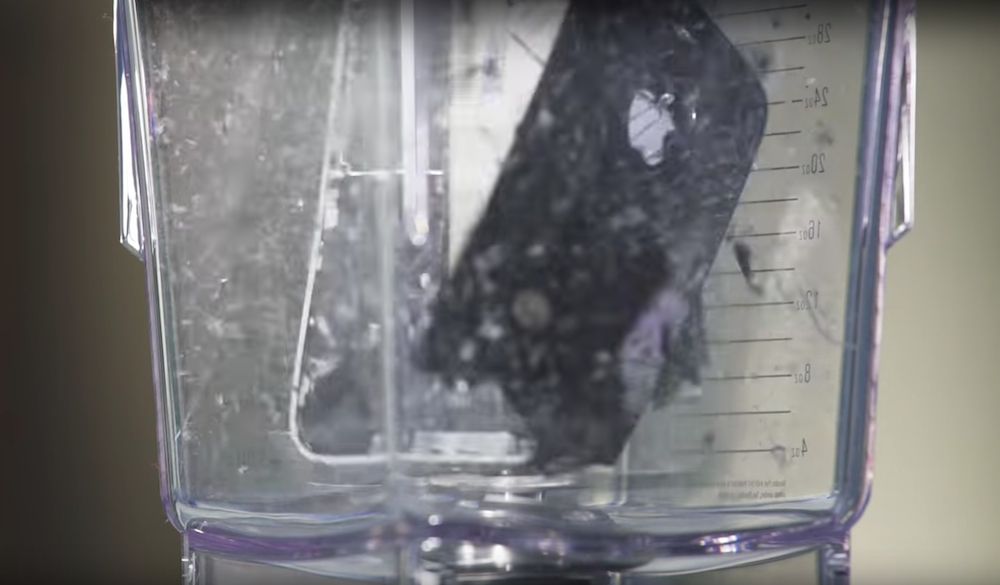
[Image above] Ever wonder what materials make up your smartphone? University of Plymouth researchers decided the best way to answer that question was with a smartphone smoothie. Credit: University of Plymouth, YouTube
Usually when people have nightmares about their smartphones, those nightmares include situations in which the phone gets dropped, broken, and smashed beyond repair. Yet researchers at the University of Plymouth in the United Kingdom actually dreamed of creating such a situation—with a little help from a blender.
In a new project to encourage greater smartphone recycling rates, University of Plymouth researchers decided to quantify the exact breakdown of elements—particularly rare-earth elements—in an average smartphone. They hoped that by showing people the amount of each element required to produce one smartphone, consumers would appreciate the level of mining required for smartphone production and would then be more likely to recycle their phone at the end of its life.
“We are now in a climate where people are becoming more socially responsible and interested in the contents of what they are purchasing,” Colin Wilkins, senior lecturer in economic geology at the University of Plymouth, says in a university press release. “We hope this project will encourage more people to ask questions about their own behaviors.”
But quantifying the amount of each element is difficult when all elements are contained within a single, heterogeneous structure. It would be much easier if that structure could be broken down into its constituent parts.
And that’s where the blender comes in.

The researchers decided the best way to separate elements was by throwing a smartphone in a blender. Then they mixed the pieces with a powerful oxidizer and acid to determine the phone’s precise chemical contents. And, lucky for us, they recorded exactly what happens when smartphone meets blender blades, so we can see the destruction without sacrificing our own phones.
While the University of Plymouth researchers’ goal for this project was to emphasize the importance of recycling in order to decrease the significant damage mining inflicts on local environments, there is another (economic) reason we should reuse the rare earths we already have.
As American Elements CEO Michael Silver and CNN anchor Richard Quest discussed in a recent interview, China holds a global monopoly on rare-earth minerals. “Rare earths are ninety-six percent in China, and the rest of the four percent in the rest of the world China has an entity in,” Quest summarizes. And even though recent surveys have identified potential new lucrative deposits of rare earths, China’s dominance will likely stand unchallenged for a long time yet.
By recycling old electronics that contain rare earths, not only are we doing a favor to the environment, but we are also reducing dependence on China to supply all rare earth needs. And if we ever want the clean energy revolution to see the light of day, we need every ounce of rare earths that we can get. (How much rare earths will we need for green tech? Take a look at the infographics included in this Motherboard article to find out!)
Did this project encourage you to recycle your old phone? Call2Recycle, a nonprofit battery stewardship program that operates in the United States and Canada, has a drop-off location locator on its website that shows recycling places near you!
Credit: University of Plymouth, YouTube
